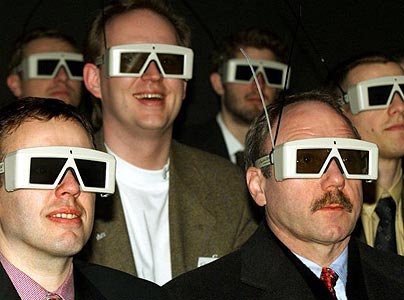 The Blu-ray Disc Association has finally completed work on the Blu-ray 3D specification, which provides a standardized way for Hollywood studios to bring the growing amount of 3D theatrical content—things like Up and Avatar—to Blu-ray users with full HD 1080p 3D graphics. The system works by compressing separate video streams for the left and right eye, meaning 3D content has about double the data of a typical 2D presentation…and, of course, it means viewers will still get to wear those fabulously hip 3D glasses to take in the content.
The Blu-ray Disc Association has finally completed work on the Blu-ray 3D specification, which provides a standardized way for Hollywood studios to bring the growing amount of 3D theatrical content—things like Up and Avatar—to Blu-ray users with full HD 1080p 3D graphics. The system works by compressing separate video streams for the left and right eye, meaning 3D content has about double the data of a typical 2D presentation…and, of course, it means viewers will still get to wear those fabulously hip 3D glasses to take in the content.
“Throughout this year, movie goers have shown an overwhelming preference for 3D when presented with the option to see a theatrical release in either 3D or 2D,” said the Blu-ray Disc Association’s Victor Matsuda, in a statement. “We believe this demand for 3D content will carry over into the home now that we have, in Blu-ray Disc, a medium that can deliver a quality Full HD 3D experience to the living room.”
We really think Matsuda is discounting the fashionable trendiness of the glasses as a motivating factor in adopting 3D technology.
The Blu-ray 3D spec is device agnostic, meaning it can support any 3D-capable display, regardless of whether that display uses plasma, LCD, OLED, or other technologies. The spec also enables forthcoming 3D-capable players to support displaying 2D content, and existing Blu-ray players will be able to display 2D versions of 3D Blu-ray discs; 3D capable players will also be able to support 3D graphics for menus and other interface elements. And the PlayStation 3 will be able to fully support 3D content.
The Blu-ray Disc Association will release the completed spec to device manufacturers and content providers “shortly,” leaving it up to them to decide when and how to start producing Blu-ray 3D devices and content.


